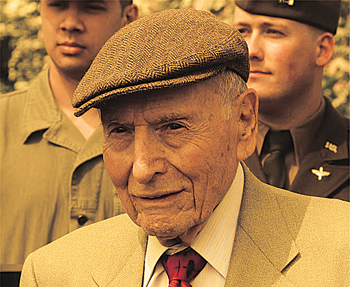INDIAN ARMED FORCES CHIEFS ON OUR RELENTLESS AND FOCUSED PUBLISHING EFFORTS

The insightful articles, inspiring narrations and analytical perspectives presented by the Editorial Team, establish an alluring connect with the reader. My compliments and best wishes to SP Guide Publications.

"Over the past 60 years, the growth of SP Guide Publications has mirrored the rising stature of Indian Navy. Its well-researched and informative magazines on Defence and Aerospace sector have served to shape an educated opinion of our military personnel, policy makers and the public alike. I wish SP's Publication team continued success, fair winds and following seas in all future endeavour!"

Since, its inception in 1964, SP Guide Publications has consistently demonstrated commitment to high-quality journalism in the aerospace and defence sectors, earning a well-deserved reputation as Asia's largest media house in this domain. I wish SP Guide Publications continued success in its pursuit of excellence.
Si Spiegel (1924-2024)
Si Spiegel’s B-17 experienced engine trouble early in the bombing mission. Then, as he flew over Berlin, ground fire knocked out a second engine. He still had two engines running, but soon a fuel tank started leaking.

Si Spiegel was just one of tens of thousands of young Americans who were rushed to the European front during the Second World War. However a single bombing mission towards the fag end of his career marked him as one of the more noteworthy such pilots.
Si Spiegel was born on May 28, 1924, in Manhattan, New York. After graduating from high school, he was keen to fight the Nazis. So without telling his parents, he enlisted in the Army soon after he turned 18. Thanks to his mechanical skills he was sent to the aircraft mechanic school. He was terribly disappointed. However, a sympathetic officer told him about another recruitment office at Mitchel Field, not far distant. There he found that he was one of only two pilot applicants, and the other candidate was ineligible due to poor eyesight. Spiegel’s perfect vision and other qualities finally got him into pilot training.
Once his training was done, Spiegel was assigned to the 8th Air Force, based at Eye, England. Just 20 years old, he flew numerous bombing missions on the B-17 Flying Fortress for the next several months. Raids against Germany were often carried out in daylight and the massive B-17s were sitting ducks for the skilled German gunners. More than 50,000 American airmen were killed, with the 8th Air Force alone suffering 40 per cent of all casualties in the air campaign.
The Berlin Mission commenced on the morning of February 3, 1945. A massive force of 1,437 bombers and 948 fighters took off from England ostensibly against Nazi Germany’s Luftwaffe headquarters. However the sheer size of the airborne armada indicated that the Allied commanders were determined to hit the Germans where it hurt and if some bombs fell on civilians they would not be unduly concerned.
Si Spiegel’s B-17 experienced engine trouble early in the bombing mission. Then, as he flew over Berlin, ground fire knocked out a second engine. He still had two engines running, but soon a fuel tank started leaking. Assessing that he would not be able to make it back to England safely, Spiegel ordered his crew to prepare to crash-land. His main aim was to try and get across the Russian frontline. No Jewish pilot would want to get shot down and be captured by the Nazis, so he turned the giant stricken bomber towards Poland. Meanwhile, his radio operator made contact with England and relayed their status: “No one hurt, two engines out, attempting to land in Warsaw.”
Trying to identify a suitable landing spot, Spiegel headed downriver until he was able to carry out a belly landing on a frozen potato field. The crew were rescued by Russian troops and eventually brought to the Polish city of Torun. Although the Americans were not prisoners they could not leave without approval from Moscow. Spiegel met another B-17 pilot named George Ruckman, whose plane had lost one engine to flak and had blown a tyre while force landing. Ruckman and Spiegel soon devised a wild escape plan. A team would go to Spiegel’s wrecked plane, 70 miles away, and collect an engine and a spare tyre to repair Ruckman’s bomber.
Employing a judicious mix of secrecy and courage, and liberally bribing the Soviet soldiers, they managed to retrieve an engine and spare tyre. Using tools left behind by the Nazis, the crews worked in plain sight of the Russians to repair the plane. Perhaps the Russians never imagined they would actually make the bomber flightworthy. But they did. On March 17, 1945, Ruckman and Spiegel managed to get the giant B-17 airborne and carefully nursed the tottering aircraft with 19 men on board towards the south till they landed safely at an American air base in Italy. Spiegel returned home to a hero’s welcome on August 31, 1945.
Post-war, many veteran pilots joined the commercial airline industry but Spiegel was told that Jews were not wanted. However, he managed to get a job as a machinist with a brush manufacturer in New York. When sales of brushes plunged, the company experimented with producing artificial Christmas trees. Spiegel convinced his bosses that the industry was set to explode in sales. He was allowed to start his own Christmas tree division called American Tree and Wreath. He studied real trees and soon mastered the art of making perfectly shaped Christmas trees. By the mid-1970s, the business really took off. Spiegel left the company in 1979 and two years later founded the Hudson Valley Tree Company, which began mass-producing 80,000 trees a year. Spiegel who was now known as “king of the artificial Christmas tree” patented his designs and launched his own line of artificial trees before retiring in 1993 as a multimillionaire. He died on January 21, 2024, four months short of his 100th birthday.





